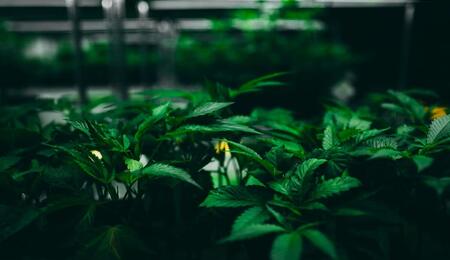8 Top Tips for Vertical Systems

At home, Cannabis is usually grown horizontally in the grow room. But it can also be done in a vertical setup. Vertical grow systems can be costly and require more skills to maintain, but they can accommodate a greater number of plants and produce extra yields during the year. Below are some bits of helpful information that it’s good to consider before purchasing or installing an expensive vertical unit.
What is Vertical Growing?
In the most basic definition, vertical growing could be as simple as putting a few plants around the edge of your horizontal grow room, thus maximizing the use of lights. However, when we talk about vertical setups, it refers to the more expensive ‘plug and play’ systems that can be installed quickly and which can fit 80-100 small plants.
A classic vertical system for growing cannabis consists of plants positioned in a 360-degree arrangement; this setup is designed to make maximum use of height in the grow room and maximum use of lights. It’s an effective system that can help boost harvest. You work with many dozens of plants, but you also need more skills and enough finances to maintain that system. So there are both benefits and disadvantages to using vertical systems for growing cannabis.
8 Top Tips for Growing Cannabis in Vertical Setups
If you are working with one or want to try it, below are some tips and words of advice that you should consider and always have in mind with vertical setups.
1. Vertical Systems Are Not for Every Cannabis Strain
Small, stocky plants are preferable when growing cannabis in a vertical setup. Therefore it’s crucial to select strains that remain short and squat, and have tight internodes. Plants tending to grow tall and leafy could be a problem as they will stretch out before they are fully flowered and this way you will be losing potential yields.
2. Grow the Cannabis Strain in a Regular Setup First
They say practice makes it perfect. Cultivating cannabis in a vertical system is for those growers who want to take things to the next level. There is little space for making mistakes, which is why it’s important to already know what to expect from a certain strain. Before farming in a vertical setup, try and grow the same strain in a normal horizontal setup. You want to look for strains that quickly spread roots and do not succumb to stress when transplanted. In flowering, the strain should not overstretch and should be easily pruned into a single cola.
3. Keep Same Size Cuttings
Spacing between plants grown vertically is limited, so you don’t want bigger plants blocking the light to adjacent smaller plants. This can be easily prevented if all cuttings that you produce look uniformed. In any case, it’s recommended to propagate more cuttings than what you might actually use in a vertical setup. Start them and choose the ones that appear to be the same size.
4. Ensure Cannabis Roots Are Fully Developed
Vertical setups involve growing with a veg period of only a short few days, therefore it’s a must that your cuttings fully grow their roots in the starter media before they are placed in the vertical system. Which again brings us to tip number one and number two - choosing a strain that is appropriate for this type of setup. Fast-rooting strains are more than recommended. Ideally, clones will show roots immediately and you won’t waste time waiting for them to spread.
5. Choose a Slab That Has Omnidirectional Weave
Be careful what type of rockwool slabs you select for a vertical operation. Some rockwool slabs are designed solely for horizontal use; the ‘wool’ is woven horizontally so that nutrients spread evenly with every drip. However, with vertical setups this could leave some plants without nutrients. A slab with omni-directional weave will ensure that all plants receive their nutrients.
6. Use Clean Mineral Nutrient Solutions
Drip irrigation is the common feeding method in vertical systems. Plants are soaked in the system for about nine weeks on average, and they benefit from every nutrient taken. It’s important to use clean nutrient solutions that will not clog the system. For example, sticky flower stimulators might create blockages and problems. So, don’t rush to add just about anything in the system.
7. Keep Close Day and Night Temperatures
Maintaining a consistent temperature is essential when you want to grow short and stocky plants. Big differences, with temperature shocks, could lead to stem elongation and more leaves than buds on the canopy. But when you have a similar temperature day and night, it will help plants stay shorter.
8. Don’t Forget About Humidity
A small space packed with dozens of plants, especially as they flower, means one thing: there will be humidity. And you need to take care of it. Installing a proper ventilation system as well as using clip fans that will blow across the canopy will help prevent accumulation of stale air between plants. Otherwise, it’s an invitation for powdery mildew as well as the devastating bud rot.
Also read on Soft Secrets:






